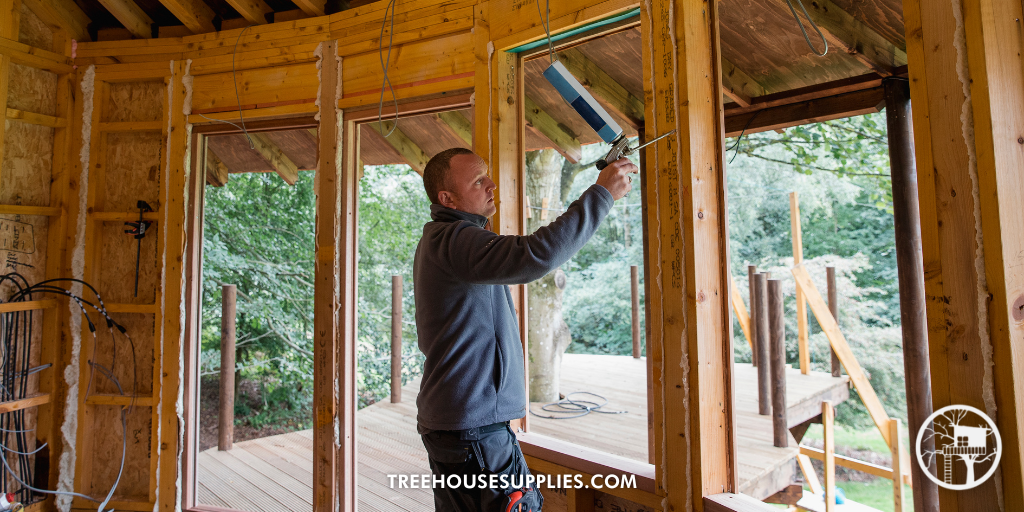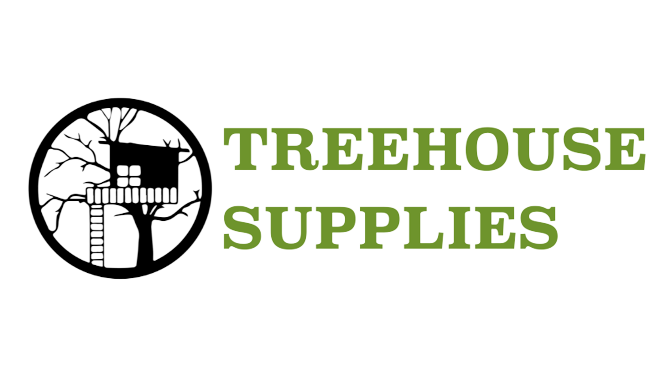The Do’s and Don'ts of Building a Treehouse

Are you thinking of building a treehouse in your backyard? A treehouse can be a magical place for kids and adults alike to play, relax, and escape from the hustle and bustle of everyday life. But building a treehouse is not just about nailing some planks of wood to a tree. It requires careful planning, attention to safety, and choosing the right materials. Whether you are a seasoned DIY enthusiast or a beginner, there are several do's and don'ts to remember when building a treehouse. In this blog, we'll explore everything you need to know to build a safe and sturdy treehouse, from selecting the right tree to designing the structure and adding the finishing touches. So, let's dive into the do's and don'ts of building a treehouse and creating a backyard oasis that your family will love.

The Do’s:
- Do your research. Check your area's laws and regulations to ensure treehouses are allowed. Then talk to professional tree house builders about local regulations and standards.
- Do get permission from the property owner before beginning construction. If multiple owners are on the property, get their approval or ensure they approve your plans before starting work on your treehouse.
- Do your research on trees as well. Make sure that the trees you want to build on are healthy and strong enough for construction. If not, you might have to move locations or choose different trees altogether (or both).
- Do take safety precautions seriously. This includes wearing safety equipment like helmets and goggles when working with tools like saws and drills near your head or face. Do also ensure that you have proper insurance coverage for this type of project so that if something goes wrong, it will save you money and time to fix it again!
- Do use materials that won't damage the tree.
- Do use nails or screws, not rope or wire, to secure the structure to the tree.
- Do consider your child's age and size before building a treehouse. It's essential to make sure that your child will be able to manage the treehouse safely and easily.
- Use pressure-treated lumber if you're building in an area with lots of moisture or salt water. Pressure-treated lumber won't rot as fast as untreated lumber, making it last longer and keeping your treehouse safer for your kids.
- Do Place your treehouse well away from electrical wires and power lines; never build on top of them either!
- Consult a professional, especially when working with power tools or electricity.

The Dont's:
- Don't attach the treehouse directly to the tree: Many people make the mistake of nailing or screwing the treehouse directly into the tree. However, this can damage the tree and lead to instability over time. Instead, use brackets or bolts that attach to the tree without piercing the bark.
- Don't underestimate the weight of your treehouse: It's essential to remember that your treehouse will have to support its weight and the weight of the people inside it. Use sturdy and high-quality materials to ensure your treehouse can withstand the weight and pressure.
- Don't neglect the importance of a sturdy foundation: A solid foundation is critical to the stability of your treehouse. Always use secure and robust supports, and avoid placing the structure too high in the tree.
- Don't forget to consider local building codes and regulations: Before you start building your treehouse, research your local building codes and regulations. Many areas have specific rules and restrictions on the size and height of treehouses, and failing to comply could lead to fines or legal issues.
- Don't forget to plan for ventilation: Proper ventilation is crucial to prevent moisture buildup and ensure air quality inside the treehouse. Ensure windows or vents in your design allow for adequate airflow.
- Don't use defective or unsafe building materials: It can be tempting to cut corners and save money by using cheaper or defective building materials, but this can compromise the safety and stability of your treehouse. Always use high-quality, durable materials that are rated for outdoor use.
- Don't build too high up in the tree: Building too high up in the tree can increase the risk of accidents and falls. It's best to keep your treehouse at a reasonable height, no more than 10-15 feet off the ground.
- Don't underestimate the importance of maintenance: Like any outdoor structure, a treehouse requires regular maintenance to ensure its longevity and safety. Inspect your treehouse regularly and make any necessary repairs or adjustments.
- Don't forget to secure loose items: Loose items, such as rugs or curtains, can become a hazard if they are properly secured. Make sure to anchor or secure any loose items to prevent them from falling and causing injury.
- Don't forget to use proper safety equipment: When building a treehouse, it's essential to use appropriate safety equipment, such as a harness or safety lines. Always take the necessary precautions to protect yourself and your team during the building process
Final Thoughts
Building a treehouse can be a fun and enriching experience for the whole family, but it's crucial to approach it with care and attention to detail. By following the do's and don'ts on how to build a treehouse, you can create a safe, stable, and beautiful space that your family will love for years to come.
FAQ's
How high can I build my treehouse?
You can build as high as you would like.
When building a treehouse, it's essential to know the height restrictions set by local building codes and the Federal Aviation Administration (FAA). Your local codes will specify the maximum height your treehouse can be built from the ground, while the FAA limits the height based on your property's proximity to an airport runway. For instance, if your property line is located 50 feet from a runway, your treehouse can only be built up to 10 feet. Researching these regulations and consulting with the appropriate authorities before starting construction on your treehouse project to ensure you comply with all necessary guidelines is crucial.
How do I choose the right trees?
The first thing to do is find out which trees are good candidates for a treehouse. Straight and strong trees are best, but they also need to be tall enough so that you stay in the room before the ceiling gets high enough for comfort. Look for trees with branches at least 20 feet above ground level (or higher) if possible. It's best if the branches form an open canopy below them - if there are too many leaves or branches in the way of sunlight reaching the ground below, it might be hard for people inside to see what's happening outside. Also, look for trees well separated from other trees - otherwise, you may end up with a lot of noise from wind blowing through branches not far away from your cabin!
What is the difference between a treehouse and a tree fort?
Treehouses are generally built around an existing tree, while forts are usually built on the ground.
How do I know if my location is safe for building?
Check with your local zoning office to see if you have any restrictions or limitations on building in your area. If there are no restrictions, then you should be fine!
How much does it cost to build a treehouse?
The cost of building a treehouse depends on the size and complexity of your project. If you have a basic design and can do the work yourself, you can expect to spend between $5,000 and $10,000. But if you hire an architect or contractor to design and build a custom treehouse for your property, expect costs to be significantly higher.

Leave a comment